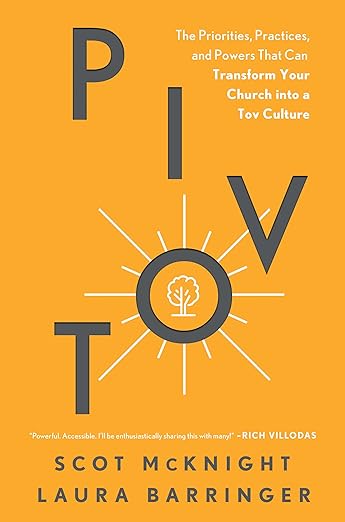
Changing business management concept. Businessman erasing white arrow and drawing yellow arrow on chalkboard.
Oak Hills Church began simply and modestly in 1984 with seventeen people in a strip mall in suburban Folsom, California. Over the next six years, the church grew to about 200 in weekly attendance, and by 1997 the church grew to an average attendance of 1,700.
In Renovation of the Church, founding pastor Kent Carlson describes Oak Hills’ rapid growth in the 1990s: “It was exhilarating and intoxicating. We would finish a service and there would be a long line of people waiting to talk with me.”3
But a creeping unease began to grow among the Oak Hills staff. In fact, they collectively used the metaphor of “a monster” to describe their concerns:
One of the undeniable truths of the culture of the large entrepreneurial, attractional-model church is that it requires constant feeding. When we structure a church around attracting people to cutting-edge, entertaining, interesting, inspirational and always-growing services and ministries, there is simply no room for letting up. Many in our staff were troubled by the fact that we could never really let up. We would talk about how we could hear the monster beginning to stir again in the fictional basement of our church, and we knew that if we did not feed it, its cage would not hold it. Therefore, week after week, we all mustered the energy to put on the show one more time.5
 Eventually, Carlson and pastor of spiritual formation Mike Lueken, along with their staff, underwent a process of Spirit-led transformation. The story at Oak Hills began to change, from one that followed a model of success based on numbers and religious consumerism, to one that focused more on God’s Kingdom, the mission of the gospel, and spiritual formation in the congregation.
Eventually, Carlson and pastor of spiritual formation Mike Lueken, along with their staff, underwent a process of Spirit-led transformation. The story at Oak Hills began to change, from one that followed a model of success based on numbers and religious consumerism, to one that focused more on God’s Kingdom, the mission of the gospel, and spiritual formation in the congregation.
Individually and as a group, they discovered the profound, soulful writings of Eugene Peterson, Henri Nouwen, Richard Foster, and Dallas Willard, and Carlson said, “we began to realize that our current church structure was actually working against the invitation of Christ to experience his authentic transformation.”6
This illuminating insight prompted Oak Hills to build an entirely new foundation based not on how many people were coming but on who they were becoming. The leaders bravely confronted perhaps the most difficult challenge of all—their own character, complicity, and duplicity. Mike Lueken writes:
It was time to deal with . . . the ugliness of our motivations, the size of our egos and our runaway ambition. . . .We needed to experiment with simplicity.7
Services transformed. The pastors began to teach attenders how to grow in Christ rather than to passively consume an hour-long show. Worship now centered on the story of God rather than putting on stage what would attract the most people.
Evangelism morphed from drawing a crowd to trying to develop the character of Christ within the church. “We discovered,” writes Lueken, “that the most important strategy for reaching lost people is Christians living Christianly. Effective evangelism starts by cooperating with God to become a new kind of person out of whom new and better things routinely and easily flow.”11
But Oak Hills’ let’s-do-all-this-starting-now transition to cultural transformation brought tumultuous times to the church. Several members and some staff mourned the loss of familiar services and resisted leadership’s new direction. Attendance declined by approximately 1,000 people. Many church employees found the changes difficult because they had been hired to produce and perform. They were utterly confused by the new spiritual formation model. Attenders who had “shopped” for a church and expected to find what they wanted at Oak Hills now didn’t know which end was up.
Carlson and Lueken confess to moving too quickly and making top-down decisions that ignored questions and lacked compassion. They also mention their own tendency to speak instead of listen when parishioners shared their concerns, fears, sorrow, and loss of the familiar.
Genuine transformation requires countless conversations, deeply immersed in transparency and honesty. Without open, honest, safe conversations—many, many conversations, and not a few of them difficult—there will be no transformation.
Churches are too often known for a different kind of communication style: a tell-others-what-to-do style. This didactic approach springs from a long-standing emphasis in the church on biblical expertise, and the tendency of some to believe it’s their job to teach everyone else what to think. But good conversations—involving back-and-forth exchanges through which we learn from one another and gain real understanding—are required if the church wants to engage in culture transformation. This may be the most significant need in transformational churches: Members must be able to converse with one another, honestly and with great transparency.
Sometimes, the best ideas for church culture transformation arise from the congregation. Unfortunately, many pastors, elders, deacons, and other leaders dismiss, disagree with, dispute, and silence those best ideas—which may well be a form of quenching the Spirit. Careful listening and honest dialogue will lead to new, fruitful, and creative conversations.
Good conversations exhibit at least seven attributes. Let’s consider each of them in turn.
- Good conversations are safe for everyone involved. Everyone has an opportunity to speak their mind and know that their views are respected.
- Good conversations begin with good questions about important topics. A good conversation is not idle chatter about hither and yon in the by-and-by. It has substance, focus, and direction, and it’s about things that matter.
- Good conversations are characterized by courtesy and civility. At the least, courtesy and civility mean not interrupting each other, not shouting each other down, and not calling each other names. Too often we’ve gotten away from common courtesy in the church, and social media makes it even worse. In good conversations about the church, Christians can learn a new way of civility.
- Good conversations occur in a spirit of exploration and experimentation. We identify a topic—transforming church culture—that more and more people recognize is of colossal importance, and we start asking questions: What is the current culture? What are its strengths and weaknesses? What problems does it present? How can we move the culture toward tov? As people answer these questions, probe one another’s answers, and explore together what goodness may mean for the church, progress is made toward a positive transformation of culture.
- Good conversations are on a mutual quest for wisdom. Good conversations often tend to be about something that is not yet known or that needs to be learned. Where a know-it-all may try to direct and coerce a conversation toward a predetermined conclusion, good conversationalists allow the give-and-take to germinate ideas and lead toward conclusions moderated by careful thinking.
- Good conversations discipline themselves to stay on topic. They avoid wandering off to Twitter’s latest scandal or the church griper’s latest complaint. If the topic is tov, they stick to tov.
- Good conversations in the church require shared convictions about Christian truth (gospel), relationships (love), and goals (wisdom). The time may well come for white-hot debates. Church culture transformation will, at times, set people off. Our concern here is not that every conversation be calm and reasonable, but that the heart of the conversation be finding common ground. Learning to think about culture and transformation by looking at a variety of scenarios can nudge us toward tov. Genuine conversations may well reveal that what many considered a shared conviction is not, in fact, shared by all.13
3 Carlson and Lueken,23.
5 Carlson and Lueken, 27–28.
6 Carlson and Lueken, 32, 35. Italics added.
7 Carlson and Lueken, 41.
11 Carlson and Lueken, 136–137.
13 These points are my (Scot’s) versions of themes discussed in Benedetta Craveri, The Age of Conversation, trans. Teresa Waugh (New York: NYRB, 2005).
Adapted from Pivot: The Priorities, Practices, and Powers That Can Transform Your Church into a Tov Culture By Scot McKnight and Laura Barringer. Copyright © 2023. Used by permission of Tyndale House Publishers, a Division of Tyndale House Ministries. All rights reserved.













